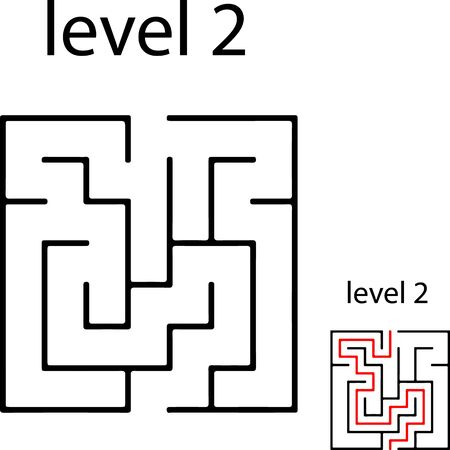Introduction: Marrying Feng Shui and British Domestic Realities
Feng Shui, the ancient Chinese art of harmonising individuals with their environment, is renowned for its principles of energy flow—known as “qi”—and the thoughtful arrangement of spaces to promote wellbeing. However, applying these principles within the context of traditional British homes presents a unique set of challenges. Many UK properties, particularly Victorian terraces and older cottages, are notorious for their draughty corridors, single-glazed windows, and patchwork insulation. These quirks not only challenge our ability to keep heat in during the long, damp winters but also complicate any attempt at achieving balanced energy flow within the home. This article explores how core Feng Shui concepts can be thoughtfully adapted to address the practical realities of heat retention and draught management in British households, offering a fresh perspective on creating comfortable, harmonious living environments that respect both Eastern philosophy and local architectural heritage.
2. The Science of Energy Flow in Draughty British Homes
Understanding energy flow within the context of British housing is crucial, especially when adapting Feng Shui principles to our unique climate and architectural quirks. Many homes across the UK, particularly those built during the Victorian and Edwardian eras, are renowned for their charm but are equally notorious for their draughts and heat retention issues. These period properties often feature single-glazed sash windows, high ceilings, and solid walls—elements that contribute to an environment where cold air seeps in and precious warmth escapes easily.
At its core, energy flow—or “chi” in Feng Shui—can be heavily disrupted by physical discomfort. In draughty British homes, this disruption is largely due to thermal inefficiencies. Cold air infiltrates through gaps around doors, windows, and floors. Meanwhile, heat generated from radiators or fireplaces tends to rise rapidly towards the ceiling or slip away through uninsulated walls. This not only makes it challenging to maintain a comfortable temperature but can also foster a sense of unease and imbalance within living spaces.
Common Features Impacting Energy Flow
| Architectural Feature | Impact on Energy Flow |
|---|---|
| Single-glazed Sash Windows | High heat loss; frequent cold spots near windows |
| Solid Brick Walls | Poor insulation; rapid thermal bridging |
| High Ceilings | Warm air accumulates above head height; inefficient heating at living level |
| Chimneys & Fireplaces | Draught paths if unused or unsealed; potential energy leak points |
The Thermal Challenge in Period Homes
The crux of the issue lies in how these homes manage—or rather mismanage—thermal energy. Unlike newer builds with cavity wall insulation and double glazing as standard, many older British properties lack such upgrades unless retrofitted. As a result, rooms may feel perpetually chilly despite the radiators working overtime. From a Feng Shui perspective, this constant struggle against cold drafts can stagnate positive energy flow, undermining both comfort and well-being.
Engineering Solutions vs. Traditional Charm
Balancing the desire to preserve historical character with the need for effective heat retention becomes an engineering puzzle as much as an aesthetic one. Simple interventions like draught excluders or heavy curtains can make notable improvements without compromising heritage features. Yet, understanding precisely where energy escapes allows for targeted solutions—a principle echoed both in building science and authentic Feng Shui practice.

3. Feng Shui Fundamentals: Mapping Chi in a British Setting
Translating traditional Feng Shui into the context of British homes requires a thoughtful approach, particularly given the quirks and charms of local architecture. Classic Feng Shui focuses on the flow of energy, or chi, through a space, but British properties often present unique challenges: irregular floor plans, unexpected alcoves, and those notorious draughts that seem to find their way through every nook and cranny. Understanding how to map chi effectively in this environment is key to achieving both harmony and comfort.
Adapting the Bagua Map for British Floorplans
The Bagua map is central to Feng Shui practice, providing a template for analysing energy distribution within a space. However, applying this tool directly to a typical terraced house or Victorian semi-detached can feel like fitting a square peg into a round hole. Start by identifying the main entrance—often at the side or tucked away—and align your Bagua accordingly. Acknowledge odd corners and alcoves as potential pockets where energy can stagnate; these require particular attention in order to maintain balanced flow throughout the home.
Addressing Odd Corners and Alcoves
British homes are rarely symmetrical, with bay windows, chimney breasts, and under-stair spaces creating both character and complexity. In Feng Shui terms, sharp corners and recessed areas can disrupt the smooth movement of chi. Soften these spaces with rounded furniture, lush plants, or carefully placed lighting. For alcoves that feel cold or unused, consider adding warm textiles or functional shelving—both inviting energy in and reducing thermal loss.
Taming Unpredictable Draughts
No discussion of British domestic life would be complete without mention of draughts. In Feng Shui, these erratic air currents can scatter positive energy just as easily as they chill your toes. Use draught excluders at doorways and heavy curtains at windows not only for heat retention but also to prevent beneficial chi from escaping too quickly. A well-placed screen or bookshelf can help redirect energy around problem areas without compromising the original features that give British homes their distinctive charm.
4. Practical Heat Retention Strategies with a Feng Shui Twist
British homes are often charming but notoriously draughty, especially during the winter months. Maintaining warmth while ensuring positive chi flow presents both a challenge and an opportunity for creative adaptation. Here, we explore actionable strategies that blend traditional British heat retention methods with core Feng Shui principles.
Heavy Curtains: Blocking Draughts, Preserving Energy
Feng Shui encourages smooth energy flow, but not at the expense of comfort. In the UK, heavy curtains are a time-tested solution to block cold air seeping through single-glazed windows or ill-fitting frames. Opt for thermal-lined curtains in earthy or harmonious colours to keep warmth inside and promote grounded, nurturing energy. Ensure they are drawn at dusk to trap heat but open them during daylight to invite yang energy and natural light.
Draught Excluders: Sealing Gaps Without Stagnating Chi
While plugging gaps under doors and around windows is essential for warmth, be mindful not to completely block the movement of chi. Use soft draught excluders—preferably in rounded shapes and inviting fabrics—to slow down cold airflow without creating stagnant corners. Place them primarily at external doors or those leading to unheated spaces.
| Strategy | Feng Shui Consideration | Practical Benefit |
|---|---|---|
| Heavy Curtains | Encourages nurturing energy (earth element) | Reduces heat loss through windows |
| Draught Excluders | Prevents harsh chi from rushing in | Minimises cold drafts at doorways |
| Fireplace Arrangements | Activates warm, vibrant energy (fire element) | Adds focal warmth and cosiness to living space |
Fireplace Arrangements: Harnessing Warmth & Chi Flow
If your home boasts a fireplace—a staple in many older British properties—make it a feature. According to Feng Shui, the fireplace represents the fire element, bringing vitality and transformation. Arrange seating in a semi-circle around it to encourage conversation and chi circulation. Keep the hearth clean and uncluttered, and use a firescreen when not in use to prevent warm air from escaping up the chimney.
Additional Tips for Balancing Warmth & Energy Flow:
- Furniture Placement: Avoid blocking radiators with large furniture pieces; allow both heat and chi to circulate freely.
- Mirrors: Strategically place mirrors to reflect light and warmth deeper into rooms without bouncing energy out through doors or windows.
- Door Closures: Keep internal doors closed where possible during cold spells, but periodically open them to refresh the air and maintain energetic movement.
A Harmonious Balance for Cosy Living
The key is finding equilibrium between retaining warmth and allowing gentle movement of energy throughout your home. By combining proven British heat-saving techniques with thoughtful Feng Shui adjustments, you can enjoy both comfort and positive flow all winter long.
5. Furniture Placement for Energy Efficiency and Harmony
Arranging furniture in British homes often poses unique challenges, especially when balancing energy efficiency with the principles of feng shui. Older properties, with their draughty windows and irregular layouts, can disrupt both heat retention and harmonious energy flow. Thoughtful placement of key items is essential not only to foster a sense of wellbeing but also to make the most of limited warmth during those long, damp UK winters.
Understanding Room Layouts in British Homes
Traditional British interiors frequently feature alcoves, bay windows, and quirky corners. Unlike the open-plan spaces favoured elsewhere, rooms here are often more compartmentalised. This means that careful consideration must be given to how furniture interrupts or encourages the flow of both physical warmth and positive chi (energy). Avoid blocking radiators or vents with large sofas or cabinets—this restricts the circulation of heat as well as energy within the space.
The Command Position: Beds and Sofas
In feng shui, placing your bed or main seating area in a ‘command position’—with a clear view of the door but not directly in line with it—fosters a sense of security and control. In a British context, try to achieve this without positioning beds beneath draughty sash windows or against cold external walls. Instead, use solid headboards or even insulated wall hangings behind beds to buffer from chills while maintaining optimal alignment.
Maximising Natural Light and Warmth
Position desks and reading chairs close to south-facing windows whenever possible. This captures precious daylight during short winter months and can subtly boost both mood and room temperature. However, don’t crowd window sills; allow curtains or blinds to close fully at night to retain heat.
Strategic Use of Screens and Bookcases
If certain areas are exposed to persistent draughts, employ bookcases or decorative screens as gentle barriers. These not only enhance privacy and visual interest but can also redirect cold air away from living zones, preserving both comfort and chi flow.
Clever Storage for Clarity
Clutter impedes energy movement and traps cold air. Opt for built-in storage solutions that blend with period features—think under-stair cupboards or window seats with hidden compartments—to maintain both orderliness and visual calm.
By mindfully arranging furniture and key objects, you can transform even the most awkwardly shaped British home into a space that feels balanced, inviting, and surprisingly snug despite the weather outside.
6. Materials, Colours, and Textures: Inviting Warmth and Flow
When adapting Feng Shui principles to the draughty realities of British homes, thoughtful selection of materials, colours, and textures becomes essential. Not only do these elements influence energy flow (qi), but they also have a direct impact on heat retention—vital for comfort in the UK’s often chilly climate.
Insulating Materials Readily Available in Britain
Begin with practical insulation. For period properties and modern builds alike, wool insulation (such as Thermafleece or SheepWool Insulation) is a natural, breathable choice that aligns well with Feng Shui’s preference for natural materials. Hempcrete panels and recycled cellulose also offer eco-friendly options while respecting the existing character of older homes. Draught-proofing tapes for sash windows and heavy thermal curtains—widely available from British retailers—help minimise heat loss without disrupting the home’s aesthetic harmony.
Earthy Colours: Supporting Warmth and Stability
Feng Shui favours earthy tones for their grounding effect, which is particularly relevant for retaining warmth and nurturing a sense of security during long British winters. Consider ochres, terracotta, muted greens, and warm taupes for walls and soft furnishings. These hues are not only inviting but also resonate with the earth element, promoting stability and well-being. Paint brands such as Farrow & Ball or Little Greene offer a spectrum of traditional British shades suited to both heritage and contemporary interiors.
Tactile Textures: Layering Comfort
Texture plays a dual role in Feng Shui: it enhances sensory experience while also serving as an additional layer of thermal protection. Incorporate thick woollen throws, chunky knit cushions, and plush rugs made from natural fibres. In true British style, opt for Harris Tweed upholstery or tartan blankets—these add cultural resonance while contributing to a layered warmth that slows the escape of heat. Even heavyweight linen curtains can offer both tactile richness and effective insulation when lined properly.
Recommendations for Harmonious Energy Flow
To maintain good qi circulation alongside improved heat retention, avoid over-cluttering surfaces with decorative items or excessive textiles, which can impede energy movement. Instead, curate key pieces that invite touch and visual comfort—a handwoven basket here, a ceramic lamp there—creating focal points without overwhelming the space.
Summary
By choosing locally available insulating materials, embracing an earthy palette inspired by the British landscape, and layering tactile textures rooted in tradition, it’s possible to craft interiors that are both thermally comfortable and energetically harmonious. These recommendations bridge the gap between practical needs and the holistic aims of Feng Shui—ensuring your home feels warm in every sense of the word.
7. Conclusion: Toward Cosy, Balanced British Homes
Drawing together the threads of Feng Shui wisdom and the hard-learned lessons of British home maintenance, it becomes clear that a harmonious living space is not simply about aesthetics or tradition alone. The draughty realities of many UK homes—be they Victorian terraces or 1930s semis—demand practical solutions to heat retention, while Feng Shui offers valuable insights into energy flow and balance. By mindfully applying both approaches, homeowners can transform chilly rooms into snug retreats without sacrificing either comfort or positive energy. Insulation, draught-proofing, and clever use of soft furnishings work hand-in-hand with the thoughtful arrangement of furniture and a focus on natural light. Adapting ancient principles to modern needs means reinterpreting them: for example, placing a mirror to reflect warmth rather than just energy, or using textiles not only for their tactile comfort but also to slow down escaping heat. Ultimately, the real success lies in finding that sweet spot where old wisdom meets new reality—a home that feels both energetically balanced and physically cosy. This blending of perspectives encourages us to see our houses not as static structures but as living environments, shaped by both cultural heritage and everyday practicality. By respecting the flow of energy while actively addressing those notorious British draughts, we take steps toward truly harmonious homes: warm, welcoming, and deeply rooted in both place and tradition.


